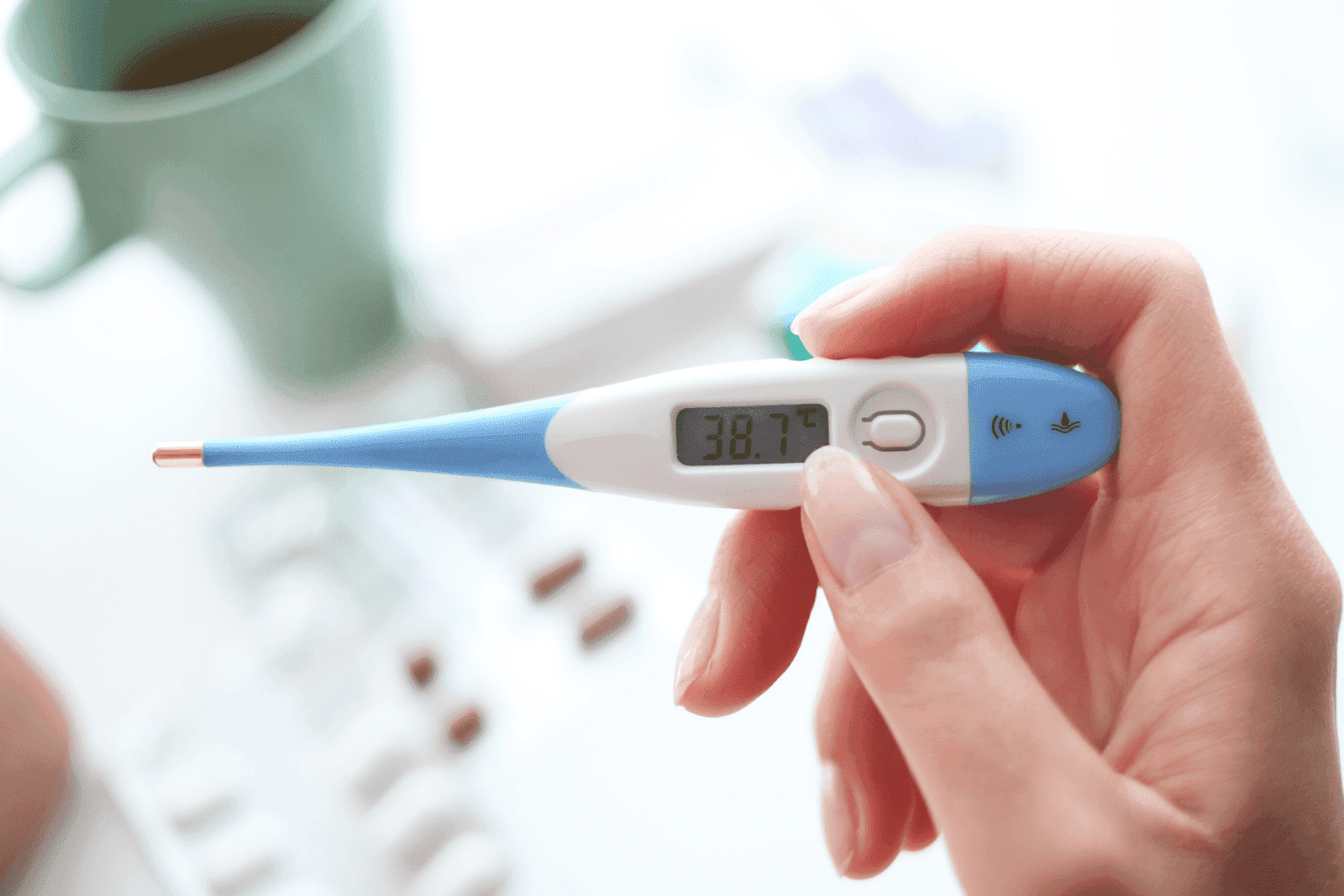Should You Take a Hot or Cold Shower When You Have a Fever?
When you’re feeling under the weather and running a fever, one of the first things you might consider is whether a hot or cold shower could help ease your discomfort. The [...]
Read More
Medically reviewed by Abhijit Bhattacharyya | MD, PhD, MBA, Tufts University School of Medicine - Miami, Florida on October 14th, 2025.
When you’re feeling under the weather and running a fever, one of the first things you might consider is whether a hot or cold shower could help ease your discomfort. The sensation of heat or coolness on your skin can feel soothing or aggravating depending on your symptoms, but what does science say about the best approach? This article explores the effects of hot and cold showers during a fever, helping you make an informed choice for your comfort and recovery.
A fever is the body’s natural response to infection or illness, typically defined as a temporary rise in body temperature above the normal range of 98.6°F (37°C). It is a sign that your immune system is actively fighting off pathogens such as viruses or bacteria. While a moderate fever can be beneficial, helping to inhibit the growth of harmful microbes, it can also cause discomfort, chills, sweating, and dehydration.
Because fever affects your body’s temperature regulation, the way you manage your external environment, including bathing habits, can influence how you feel. Understanding how your body reacts during a fever is key to deciding whether a hot or cold shower might be helpful.
 How Fever Impacts Temperature Sensation
How Fever Impacts Temperature SensationDuring a fever, the hypothalamus in your brain resets your body’s thermostat to a higher temperature. This means you might feel cold and shivery even though your core temperature is elevated. Conversely, when the fever breaks, you may experience sweating and feel overheated. These fluctuations can make it challenging to decide on the best shower temperature to ease symptoms.
In addition to the physical sensations, fever can also impact your mental state. Many people report feeling fatigued, irritable, or even confused when experiencing a high fever. This is partly due to the body's increased metabolic demands and the release of inflammatory cytokines, which can affect brain function. As a result, individuals may find it difficult to concentrate or engage in activities they normally enjoy. This mental fog can add to the overall discomfort, making it even more important to monitor symptoms and seek appropriate care when necessary.
Moreover, the duration and intensity of a fever can vary widely depending on the underlying cause. For instance, a fever caused by a viral infection may resolve more quickly than one resulting from a bacterial infection, which might require medical intervention. Understanding these differences is crucial, as prolonged or excessively high fevers can lead to complications such as febrile seizures in children or dehydration in individuals of all ages. Therefore, keeping track of fever patterns and accompanying symptoms can provide valuable information for healthcare providers when determining the best course of action.
Hot showers can provide several benefits when you are experiencing a fever. The warmth helps relax muscles, reduce body aches, and open nasal passages, which can be especially helpful if your fever is accompanied by congestion or flu-like symptoms.
Additionally, the steam from a hot shower may help soothe irritated respiratory passages, making it easier to breathe. This can be particularly comforting if you have a cough or sinus pressure along with your fever.
While hot showers can be soothing, it is important to avoid water that is too hot. Extremely hot water can cause dehydration by increasing sweating and may further raise your body temperature, potentially worsening the fever. If you choose a hot shower, keep the temperature warm but comfortable, and limit your shower time to avoid overexertion.
Cold showers or cool baths are often suggested as a way to bring down a fever quickly. The cooling effect can help reduce your skin temperature and provide immediate relief from the sensation of heat. However, the science behind cold showers for fever reduction is mixed, and the approach may not be suitable for everyone.
Cold water can cause blood vessels to constrict and may trigger shivering, which actually increases your body temperature as your muscles work to generate heat. This can make you feel worse rather than better. For some, cold showers may lead to chills and discomfort, exacerbating the symptoms rather than alleviating them.
If your fever is very high and causing significant discomfort, a lukewarm or cool shower, not ice-cold, might help bring your body temperature down gradually. The key is to avoid sudden temperature extremes and to listen to your body’s signals. If you start shivering or feel chilled, it is best to stop the cold shower and warm up.
Medical professionals generally advise against extreme temperature changes during a fever. Instead, they recommend maintaining a comfortable environment and using supportive care measures such as hydration, rest, and over-the-counter fever reducers when appropriate.
When it comes to bathing, lukewarm water is often the safest choice. This helps cool the body gently without triggering shivering or discomfort. It’s also important to dry off promptly and dress in lightweight clothing to avoid overheating.
If your fever is very high (above 103°F or 39.4°C), persists for more than a few days, or is accompanied by severe symptoms such as difficulty breathing, chest pain, or confusion, it is critical to seek professional medical care. Telehealth services like Doctronic.ai offer convenient access to qualified doctors 24/7 from the comfort of your home. They can provide personalized advice, diagnosis, and treatment options tailored to your condition.
Doctronic.ai is revolutionizing healthcare with AI-powered primary care that is fast, smart, and personal. If you have questions about managing your fever or need guidance on whether a hot or cold shower is right for you, Doctronic’s AI doctor can provide comprehensive answers in seconds, drawing on the latest peer-reviewed medical research.
For more complex concerns, Doctronic also offers affordable telehealth video visits with licensed doctors across all 50 states. This means you can get expert medical advice without leaving your home, helping you make informed decisions about your health and recovery.
Visit Doctronic.ai today to experience the future of primary care and get the support you need when battling a fever or any other health issue.
Beyond shower temperature, there are several other ways to stay comfortable while your body fights off illness:
Stay Hydrated: Fever can lead to fluid loss through sweating. Drink plenty of water, herbal teas, or electrolyte solutions to stay hydrated.
Rest: Your body needs energy to combat infection. Prioritize rest and avoid strenuous activities.
Dress Lightly: Wear breathable, lightweight clothing to help regulate your body temperature.
Use a Cool Compress: Applying a cool, damp cloth to your forehead or neck can provide relief without shocking your system.
If you feel weak, dizzy, or lightheaded, it may be safer to avoid showers until you feel more stable. In such cases, sponge baths with lukewarm water can be a gentler alternative to help reduce fever symptoms.
 Choosing the Right Shower Temperature for Fever Relief
Choosing the Right Shower Temperature for Fever ReliefDeciding between a hot or cold shower when you have a fever depends largely on your symptoms and personal comfort. Hot showers can relax muscles and ease congestion, but should be warm rather than hot to avoid dehydration. Cold showers might provide immediate cooling, but can cause shivering and raise your body temperature if too cold.
Most experts recommend lukewarm showers or sponge baths as the safest option to gently lower body temperature and improve comfort. Always listen to your body and adjust accordingly.
For personalized advice and telehealth support, consider using Doctronic.ai, the leading AI-powered doctor service that combines the latest medical research with compassionate care. Whether you need quick answers or a full video consultation, Doctronic is there to help you navigate your health with confidence.
When fever strikes, every second counts towards your comfort and recovery. Doctronic is here to provide the fastest, smartest, and most personal healthcare experience. Our AI-powered doctor is ready to answer your health questions and offer treatment recommendations based on the latest medical research, all within seconds. And as you continue to use Doctronic, our system gets to know you better, ensuring each visit is tailored to your unique health history. For those times when you need more than AI, our affordable telehealth video visits connect you with real doctors 24/7 in all 50 states. Don't wait in line or sit in a waiting room. Talk to an AI Doctor Now, for free, and take the first step towards a smarter, more personalized healthcare journey.
When you’re feeling under the weather and running a fever, one of the first things you might consider is whether a hot or cold shower could help ease your discomfort. The [...]
Read More